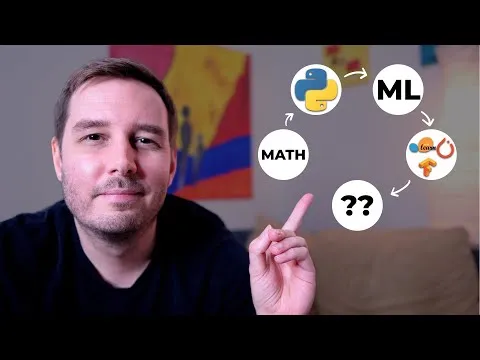
Microsoft Azure AI Engineer: Developing ML Pipelines in Microsoft Azure 
This course provides data professionals, developers, and IT pros with the skills to collaborate on data science projects and develop high-quality machine learning models in Microsoft Azure. Participants will learn to create ML pipelines in Azure, enabling them to iteratively build repeatable models. ▼
ADVERTISEMENT
Course Feature
![]() Cost:
Cost:
Free Trial
![]() Provider:
Provider:
Pluralsight
![]() Certificate:
Certificate:
No Information
![]() Language:
Language:
English
![]() Start Date:
Start Date:
Self Paced
Course Overview
❗The content presented here is sourced directly from Pluralsight platform. For comprehensive course details, including enrollment information, simply click on the 'Go to class' link on our website.
Updated in [March 06th, 2023]
This course provides an overview of developing machine learning pipelines in Microsoft Azure. Participants will learn how to create no-code machine learning pipelines using the Azure ML service visual designer, train ML models using Python, Jupyter notebooks, and the Microsoft Azure Machine Learning workspace, and monitor their Azure Machine Learning environments from the perspective of the data scientist and data engineer.
[Applications]
After completing this course, students will be able to apply their knowledge to develop ML pipelines in Microsoft Azure. They will be able to use the Azure ML service visual designer to create no-code machine learning pipelines, train ML models using Python, Jupyter notebooks, and the Microsoft Azure Machine Learning workspace, and monitor their Azure Machine Learning environments from the perspective of the data scientist and data engineer.
[Career Paths]
[Title]Data Scientist: Analyzing and Visualizing Data with Python
[Description]In this course, you will learn how to use Python to analyze and visualize data. You will learn how to use the popular Python libraries such as NumPy, Pandas, Matplotlib, and Seaborn to explore and visualize data. You will also learn how to use machine learning algorithms to build predictive models.
[Title]Cloud Architect: Designing and Implementing Cloud Solutions
[Description]In this course, you will learn how to design and implement cloud solutions. You will learn how to use cloud services such as Amazon Web Services, Microsoft Azure, and Google Cloud Platform to build and deploy applications. You will also learn how to use DevOps tools such as Docker and Kubernetes to manage cloud infrastructure.
[Title]Data Engineer: Building Data Pipelines with Apache Spark
[Description]In this course, you will learn how to use Apache Spark to build data pipelines. You will learn how to use Spark SQL to query data, how to use Spark Streaming to process streaming data, and how to use Spark MLlib to build machine learning models. You will also learn how to use Apache Airflow to orchestrate data pipelines.
[Education Paths]
1. Bachelor's Degree in Computer Science: A Bachelor's Degree in Computer Science is a great way to gain the foundational knowledge and skills needed to become an Azure AI Engineer. This degree will provide learners with the necessary skills to understand the fundamentals of computer science, such as programming, data structures, algorithms, and software engineering. Additionally, learners will gain an understanding of the principles of artificial intelligence and machine learning, which are essential for developing ML pipelines in Microsoft Azure.
2. Master's Degree in Artificial Intelligence: A Master's Degree in Artificial Intelligence is a great way to gain the advanced knowledge and skills needed to become an Azure AI Engineer. This degree will provide learners with the necessary skills to understand the principles of artificial intelligence and machine learning, as well as the ability to develop ML pipelines in Microsoft Azure. Additionally, learners will gain an understanding of the latest trends in AI and ML, such as deep learning, natural language processing, and computer vision.
3. Master's Degree in Data Science: A Master's Degree in Data Science is a great way to gain the advanced knowledge and skills needed to become an Azure AI Engineer. This degree will provide learners with the necessary skills to understand the fundamentals of data science, such as data analysis, data visualization, and data mining. Additionally, learners will gain an understanding of the principles of artificial intelligence and machine learning, as well as the ability to develop ML pipelines in Microsoft Azure.
4. Doctoral Degree in Machine Learning: A Doctoral Degree in Machine Learning is a great way to gain the advanced knowledge and skills needed to become an Azure AI Engineer. This degree will provide learners with the necessary skills to understand the principles of machine learning, as well as the ability to develop ML pipelines in Microsoft Azure. Additionally, learners will gain an understanding of the latest trends in AI and ML, such as deep learning, natural language processing, and computer vision.
Course Provider

Provider Pluralsight's Stats at AZClass
Pluralsight ranked 16th on the Best Medium Workplaces List.
Pluralsight ranked 20th on the Forbes Cloud 100 list of the top 100 private cloud companies in the world.
Pluralsight Ranked on the Best Workplaces for Women List for the second consecutive year.
AZ Class hope that this free trial Pluralsight course can help your Machine Learning skills no matter in career or in further education. Even if you are only slightly interested, you can take Microsoft Azure AI Engineer: Developing ML Pipelines in Microsoft Azure course with confidence!
Discussion and Reviews
0.0 (Based on 0 reviews)
Explore Similar Online Courses

eTourism: Communication Perspectives

Pharmacology

Python for Informatics: Exploring Information

Social Network Analysis

Introduction to Systematic Review and Meta-Analysis

The Analytics Edge

DCO042 - Python For Informatics

Causal Diagrams: Draw Your Assumptions Before Your Conclusions

Whole genome sequencing of bacterial genomes - tools and applications

How I would learn Machine Learning (if I could start over)

Learn Data Science and Machine Learning on Microsoft Azure

Machine Learning for Everyone
 Related Categories
Related Categories
 Popular Providers
Popular Providers
Quiz
 Submitted Sucessfully
Submitted Sucessfully
1. What is the first step in this course?
2. What tools are used to train ML models in this course?
3. What is the last step in this course?


Start your review of Microsoft Azure AI Engineer: Developing ML Pipelines in Microsoft Azure